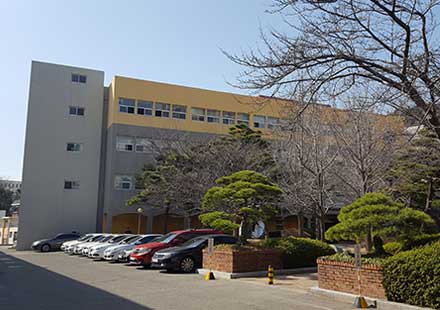Kyungsung University Museum

Kyungsung University Museum
- Location : 314-79 Daeyon-dong, Nam-gu, Busan
- Contact : 051-610-7111
- Operating Hours : 10:00 -17:00 (Closed on Sundays and national holidays)
- Website : http://ks.ac.kr/ksmuseum/
Introduction
Since its inauguration in March 1972, Kyungsung University Museum has devoted its research to the excavation of relics from the Gaya period and to the restoration of Gaya culture and history through collecting, archiving, exhibiting and researching. It carries out a vital role of researching the ancient history of Korea, focusing on the Gaya period. Moreover, the institution has also attempted to collect, archive and exhibit artifacts and folklore materials pursuant to the succession and preservation of traditional culture.
In addition, professional researchers as well as students can gain access to these relics, in order to support the promotion of academic research and Civic Education.
Through various artifacts displayed in the exhibition rooms, visitors can gradually begin to understand the history and culture from the prehistoric period to present day. In particular, the unearthed artifacts from Geumgwan Gaya in the Three Kingdoms era and folklore materials from Joseon Dynasty to modern dates are exhibited in the rooms.
Artifacts from the Geumgwan Gaya era were excavated from Geumgwan Gaya ruins including Gimhae Daeseong-dong Tombs, when the museum initiated the excavation. The potteries among the artifacts indicate the beginning and the decline of Geumgwan Gaya, while iron artifacts, trinkets and various rare artifacts display the culture of the era. Displayed folklore materials, mainly the artifacts donated by Professor Choi Nak-seon, reveal the lifestyles of commoners and their clothing, food, housing, and rural life in order to help us to understand the roots of our culture.
In addition, professional researchers as well as students can gain access to these relics, in order to support the promotion of academic research and Civic Education.
Through various artifacts displayed in the exhibition rooms, visitors can gradually begin to understand the history and culture from the prehistoric period to present day. In particular, the unearthed artifacts from Geumgwan Gaya in the Three Kingdoms era and folklore materials from Joseon Dynasty to modern dates are exhibited in the rooms.
Artifacts from the Geumgwan Gaya era were excavated from Geumgwan Gaya ruins including Gimhae Daeseong-dong Tombs, when the museum initiated the excavation. The potteries among the artifacts indicate the beginning and the decline of Geumgwan Gaya, while iron artifacts, trinkets and various rare artifacts display the culture of the era. Displayed folklore materials, mainly the artifacts donated by Professor Choi Nak-seon, reveal the lifestyles of commoners and their clothing, food, housing, and rural life in order to help us to understand the roots of our culture.

Directions
Transportation information
-
Kyungsungdae/Pukyongdae Station :
Town bus: Nam-gu1, Nam-gu2-1
Kyungsungdae/Pukyongdae Station (07-170) :City bus: 41, 83, 83-1, 108
Kyungsung University (07-013) :City bus: 10, 22, 24, 27, 40, 41, 42, 51, 83, 83-1, 108 / Express bus: 1001, 1003
Kyungsung University :Town bus: Nam-gu1, Nam-gu10
National Pension Corporation :Town bus: Nam-gu1
-
Subway Line 2 :
Kyungsungdae/Pukyongdae Station (Exit 4 or 6) on Line 2


